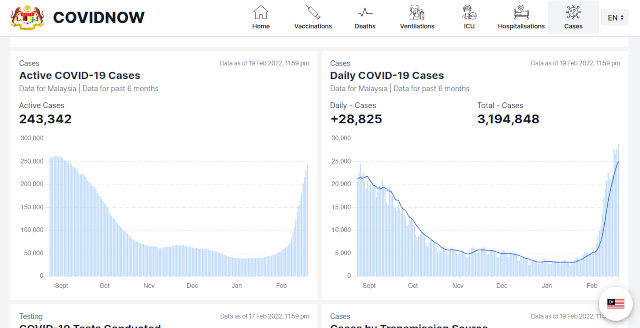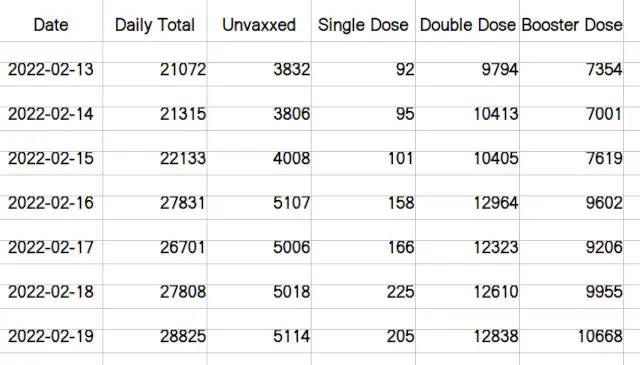And to explain this to the common folk in the street, it means whatever goes into GitHub stays there and cannot be altered. Likewise, the public have full access to every detail of COVID-19 data, if we know where to find and process them.

It was only several days ago that newly detected COVID-19 cases in Malaysia touched new highs and this trend does not seem to be abating. On February 19th 2022, the country recorded another new daily high of 28,825 cases.
In the interest of transparency, the Ministry of Health (MOH) uses respository services at GitHub to store and make available COVID-19 related data to the public. Github is a provider of distributed version control and source code management functionality tools. It provides access control and several collaboration features such as bug tracking, feature requests, task management and continuous integration.
And to explain this to the common folk in the street, it means whatever goes into GitHub stays there and cannot be altered. Likewise, the public have full access to every detail of COVID-19 data, if we know where to find and process them. Here’s the link to MOH’s GitHub repository .
More importantly, it is the breakdown of the new cases that tells the true picture of what is currently going on in the country. And the following are the latest set of data from the past 7 days of raw information posted by MOH, containing detailed breakdown of the numbers according to its respective categories :-

In an announcement made in July 2021, MOH said that with the repository, the public can find anonymous granular data on hospital admissions, critical care (ICU), & even MOH’s cluster-based analysis of transmission. This data is built from the on-the-ground work of dedicated Malaysian frontliners & CPRCs officers, shared by state & district officers every single day.






Good evening brother. I don't know anyone you mentioned above but I can sensed the hurt that you are going…
Please confine your comments to the subject of this post, i.e. a preacher caught lying in daylight. It is none…
"And also, from this line of reasoning given by Christina Ang, what about the score of believers who died from…
Benny Hinn has been spinning fraud messages ever since he started his ministries. He's been using Christian principles to gain…
Thanks for picking up on my comment made in an earlier post. Now, we know why genuine Christians will be…